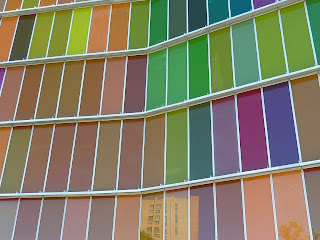- Know number of the train your taking, not just where you are going and the time the train is leaving. The train number can be very important in the larger train stations.
- Lots of Euro Trains now have paperless tickets but be aware your phone will need to be able to display the ticket and/or bar code regardless of whether you have a network connection or an adequate charge.
- There is little need for a Eurail pass unless you want complete freedom of times and trains and/or you plan on taking lots of trains all over Europe. It's expensive and can only be bought before you enter EU.
- When you have to switch trains from a train that isn't terminating at that stop, be sure to be ready to get off quickly when the train stops. I let the commuters get off ahead of me and then drag my suitcase out.
- I've gotten a bunch of great train ticket prices by buying at the last minute, including things like 4€ for 1st class upgrade.
- In the larger stations, keep checking the board, the track may change at the last minute.
- If you drag around a big suitcase (like me), there is almost always a lift somewhere on the platform. The staff on the trains don't help with suitcases, you have to be able to do it on your own or hope a fellow traveler pitches in. Getting on the train can be the more challenging bit.
- In some places, especially when it's very crowded, they make you wait to board until about 15 min before departure even though the train is there and not occupied.
- On trains later at night, especially in France, no one pays attention to the seat numbers. It seemed as if a lot of people were sitting in 1st class unless they were checked and required to move.
- There are no size or weight restrictions but you have to deal with your own suitcase. Mine is a big duffel that is handy because it fits in spots where the traditional large suitcase won't fit. There is usually some space at the end of the coach. Some trains have huge racks over the seats and on others, they were quite small. I get there early to try to get a good spot for my suitcase.
- And my biggest and favorite tip for Train Travel is SEAT 61. Check out the link The Man in Seat 61 I've used this site for over 10 years and it's great! The style of the site is a bit dated now but the information is SPOT ON! It can help you figure out a trip you didn't even think you would take but then realize it's a cool train journey to get there. The site covers trains all over the world and gives you suggestions on where to purchase different types of tickets.
HAPPY TRAILS!!!

















































